Top Gun Flies the REACTION 54 Jet
On Tuesday, June 2, 2009, the Sanderson Field RC Flyers'(SFRCF) Top Gun Charles Kentfield arrived to fly his REACTION 54 jet. How much room in his truck did the jet and support equipment take up? About all of it!
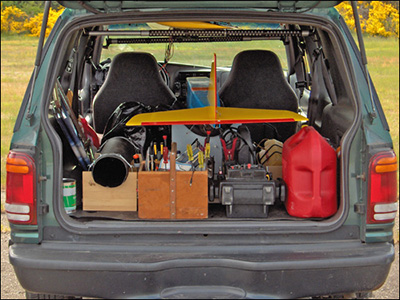
The first item to be unpacked from the truck was a home-made assembly consisting of a piece of stove pipe mounted on a wood support. This assembly,I was to learn later, is placed directly behind the jet turbine's exhaust to contain any flame caused by a "hot start." A "hot start" occurs when excessive fuel or liquid propane enters the engine prior to startup (the engine is flooded).
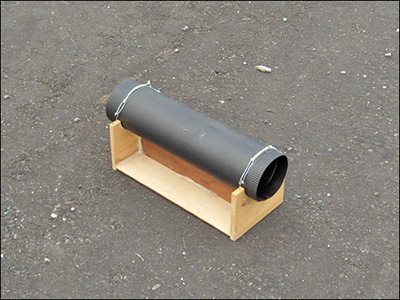
Other equipment followed, including the jet body itself.
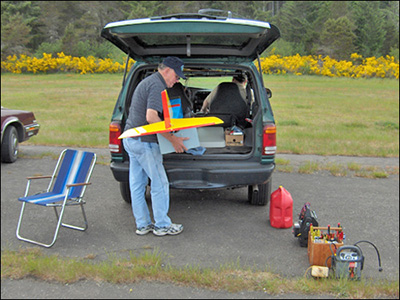
Everyone present was fascinated as Charles explained the business end of the jet, the J600 turbine. The turbine is manufactured by PST JETS.
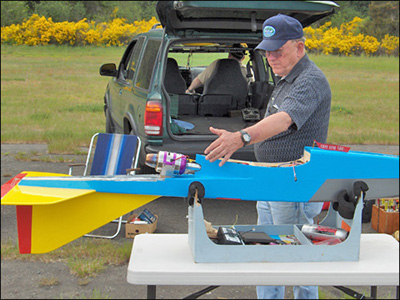
Next, the wing was attached to the aircraft body.
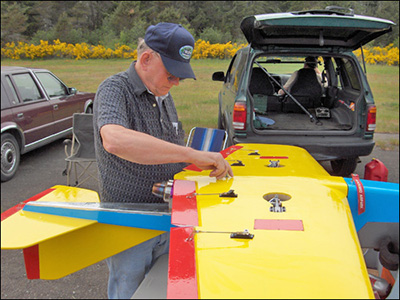
Prepping the jet for flight began with a battery check.
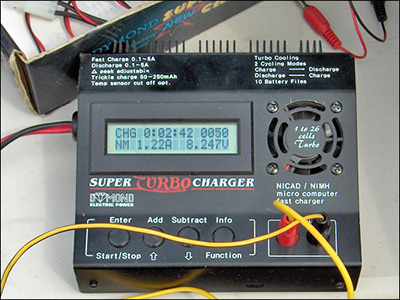
There are two battery packs in the aircraft. One pack powers the Turbine Engine Management System (TEMS) and another powers the radio equipment. The TEMS controls the running of the turbine.
Fueling the jet began by adding the propane from a pressurized external canister.
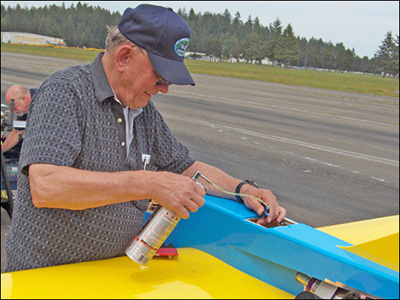
During the turbine startup, the propane burns when the glow plug lights —the turbine begins to spin up.When the turbine reaches the correct RPM and temperature, the TEMS starts the turbine fuel pump and the turbine begins burning the kerosene fuel. But first, the aircraft must be fueled with the kerosene.
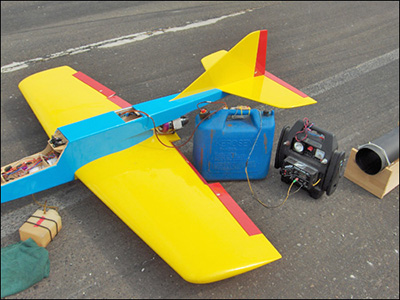
An important item during preflight checks was to verify the air-tank pressure for the retracts.
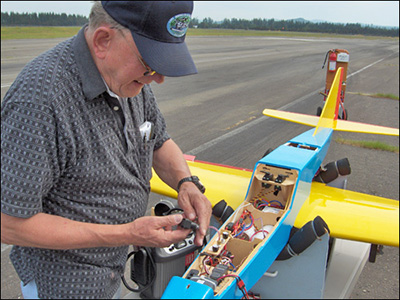
Before the startup, Charles connected the Ground Display Terminal (GDT). The GDT is used to program, operate, or monitor the TEMS.
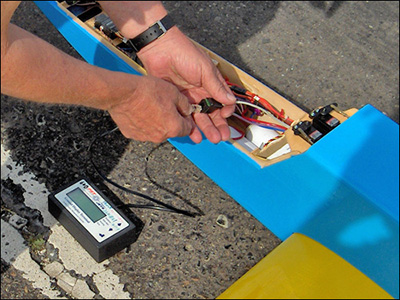
The image below shows the GDT readout while the engine was cooling down.
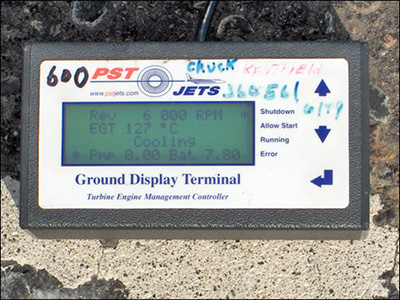
After the preflight preparation was completed, Charles began the startup procedure.
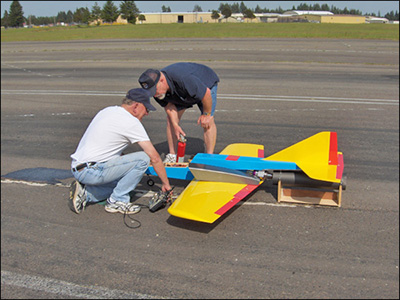
The turbine was a bit flooded causing a spectacular "hot start," with flaming exhaust. I now appreciated the value of the stove pipe "flame-containment unit." Such events show the importance of having an assistant standing by with a fire extinguisher. In this case, the extinguisher was not needed and the aircraft suffered no damage.
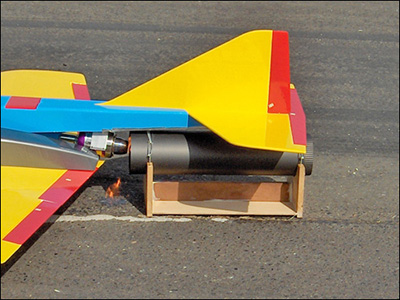
A little more than an hour after arriving at the field, the turbine was started and Charles taxied the REACTION 54 onto the runway ...

...and moments later, the jet was in the air.
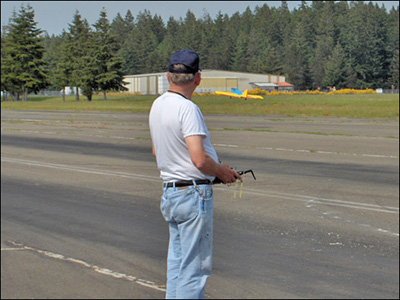
Charles landed the jet and taxied it off the runway after a very successful 7-minute flight.
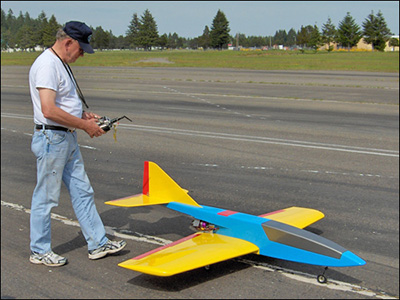
Everyone present thoroughly enjoyed the first flight and was treated to a second flight. It is hard to express my thrill as the jet flew by: the sound of the turbine sounded, well, just like a real jet.